Jessner’s Solution Exfoliates the Skin, Reduces Inflammation, Decreases Bacteria, and Clears Clogged Pores

The Essential Info
Jessner’s solution is a chemical peel made of:
- 14% salicylic acid
- 14% resorcinol
- 14% lactic acid
Like other chemical peels, Jessner’s solution can help clear acne. However, research has found that a 30% salicylic acid peel may be slightly better at clearing acne than Jessner’s solution.

The Science
- Introduction to Jessner’s Solution
- How Jessner’s Solution Works to Clear Acne
- Jessner’s Solution Treatment
- Side Effects of Jessner’s Solution
- How Well Jessner’s Solution Works on Acne
Introduction to Jessner’s Solution
There are several types of chemical peels used to treat acne, and these peels normally contain one acid. Jessner’s solution is a different type of chemical peel, made with a combination of ingredients. The components of Jessner’s solution are:
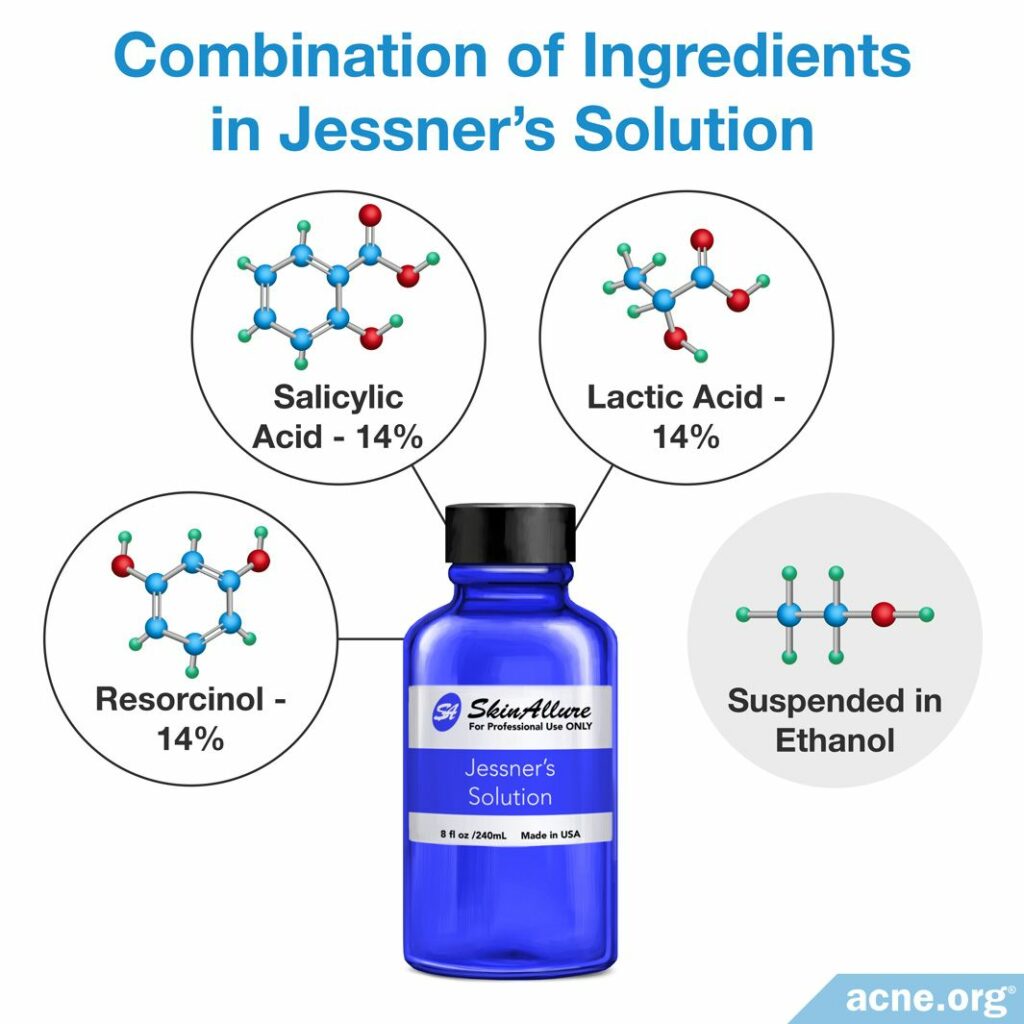
- Salicylic acid (14%): Salicylic acid is a beta hydroxy acid (BHA). Beta hydroxy acids are common acne treatments that work by exfoliating the top layer of skin, reducing inflammation, and reducing bacteria.
- Resorcinol (14%): Resorcinol is a peeling agent that helps promote peeling of the top layer of skin, reduces inflammation, and reduces bacteria
- Lactic acid (14%): Lactic acid is an alpha hydroxy acid (AHA). Alpha hydroxy acids are common acne treatments that work by exfoliating the top layer of skin, and reducing bacteria.
- Ethanol: Ethanol is rubbing alcohol, and it is the base of Jessner’s solution. This means that salicylic acid, resorcinol, and lactic acid are all mixed with ethanol to create it.
Combined, these components all work together to exfoliate the topmost layer of skin, which helps to unclog pores to prevent acne.
Research has found that Jessner’s solution is able to clear acne to some degree, but may be less effective than other peels.1-3
How Jessner’s Solution Works to Clear Acne
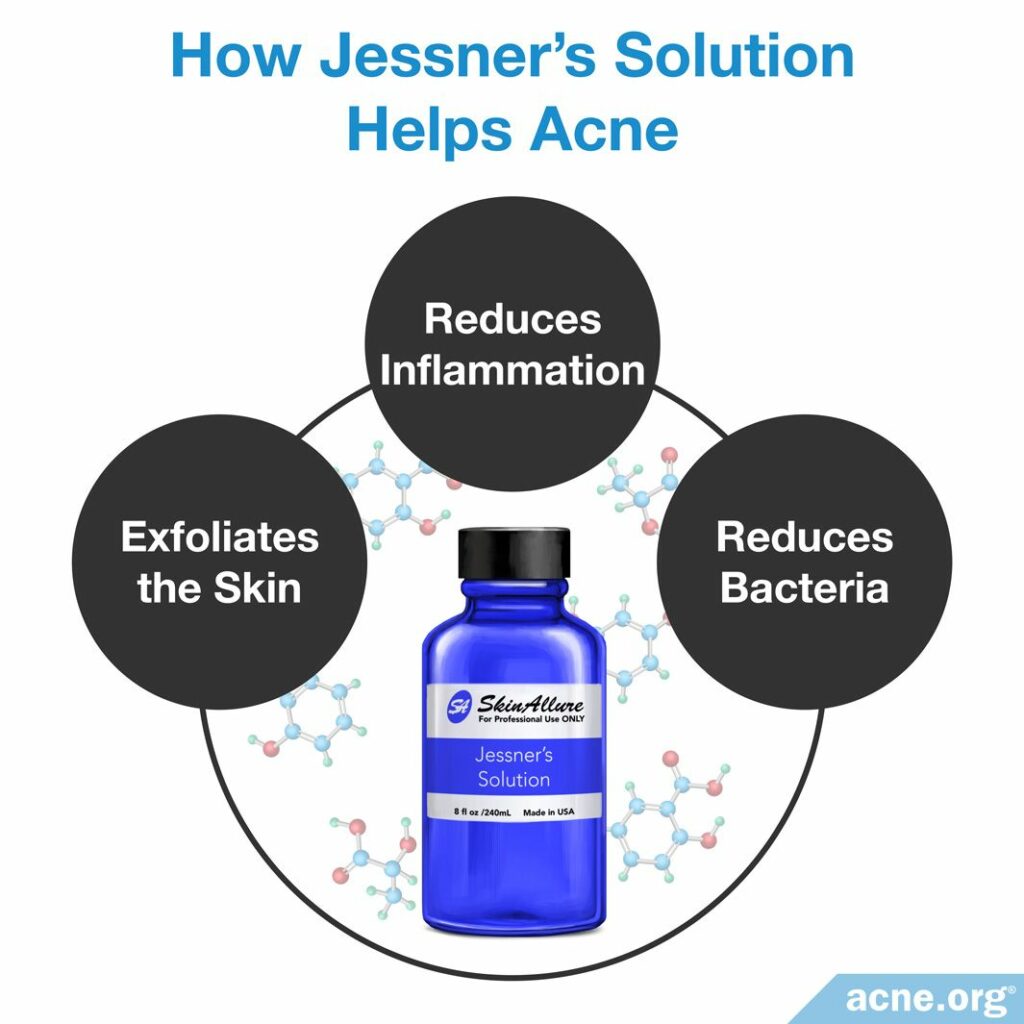
The effects of Jessner’s solution on acne include:
- Exfoliating the skin: In normal skin, there is a constant state of renewal as old skin cells flake off the skin, and new skin cells replace them. In acne, this process is disturbed and a layer of dead skin cells forms on the surface of the skin. All the components of Jessner’s solution work to exfoliate the topmost layer of dead skin cells. Salicylic acid does this by breaking apart connector proteins called desmosomes, which normally work to connect cells together. Resorcinol and lactic acid do this by breaking down the “sticky” keratin protein, which works like glue to stick skin cells together. All of these factors together break apart the dead skin cells that accumulate on the surface of the skin, which helps to exfoliate the skin’s surface and unclog pores.
- Reducing inflammation: Acne is an inflammatory disease, meaning that inflammation is present in all stages of acne lesion development. The salicylic acid and resorcinol components of Jessner’s solution have anti-inflammatory properties, which means they can reduce inflammation inside an acne lesion. The anti-inflammatory properties of salicylic acid and resorcinol may help to reduce the inflammation found in acne lesions.
- Decreasing bacteria: C. acnes is a bacteria found in excessive amounts inside clogged pores. This bacteria can make acne worse. All of the components of Jessner’s solution have anti-bacterial properties, which means they can decrease the amount of C. acnes in the skin and in acne lesions. This may help prevent acne from worsening.
- Clearing clogged pores: The salicylic acid component of Jessner’s solution is oil-soluble, which means that it dissolves in oil. This enables the salicylic acid to dissolve inside the sebum (skin oil) inside of a clogged pore and help to clear it from the inside out.1-3
Jessner’s Solution Treatment
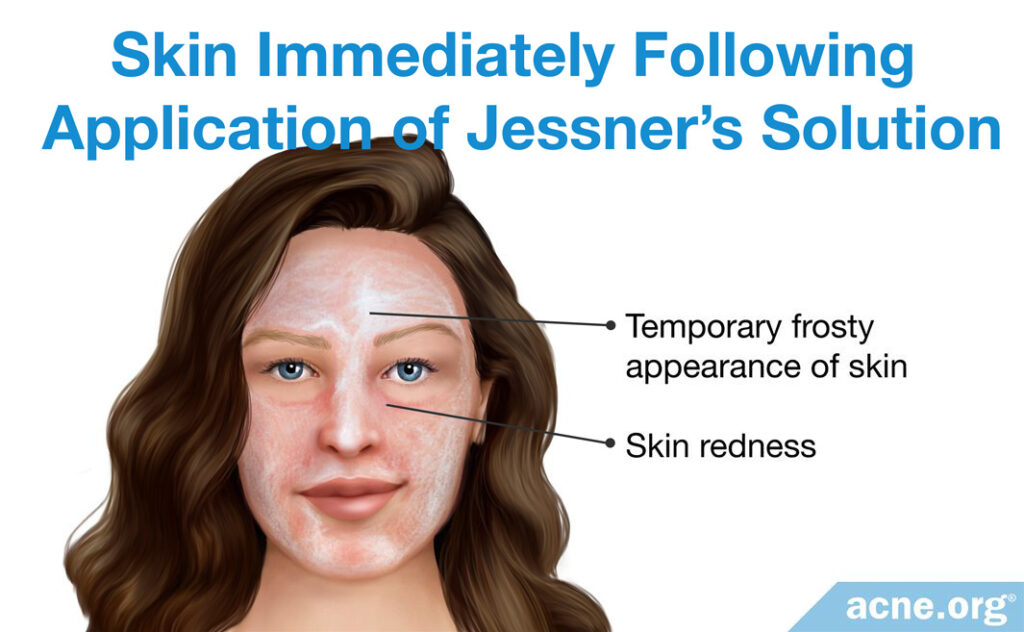
Jessner’s solution is only available as a professionally administered chemical peel and is not available as an over-the-counter treatment. Only a doctor, nurse, or esthetician/cosmetician can safely apply it.
Whereas most acne chemical peels are applied in one coat, a Jessner’s solution peel is applied in multiple coats. Each coat is left on the skin for approximately 7 – 10 minutes, and then the next coat is applied on top. The more coats used, the stronger the effect. A superficial Jessner’s solution peel treatment involves one to three coats, while a stronger Jessner’s solution peel treatment involves four to seven coats.
For the best results, Jessner’s solution treatments should be applied once every two to four weeks.
A successful Jessner’s solution peel results in the formation of a white powder-like substance, called a frosting, on the skin. If the Jessner’s solution peel works well, a frost will form. This frosting can be simply rinsed or wiped off after treatment.
Following the treatment, the skin will continue to peel for 8 – 10 days.3,4
Side Effects of Jessner’s Solution
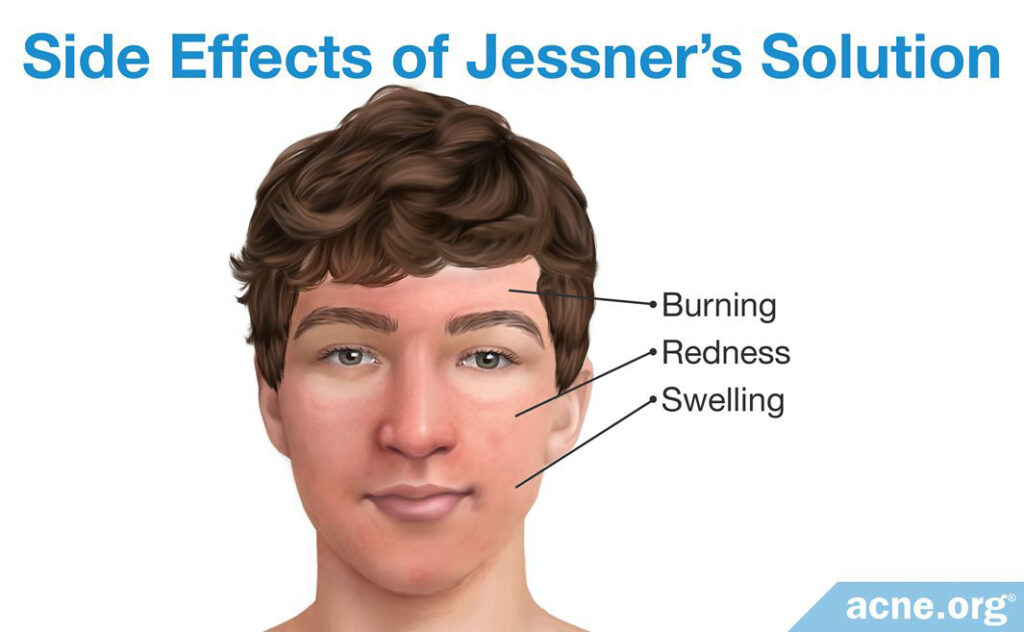
As Jessner’s solution is applied in layers, it is generally safer than other chemical peels because the peel can be stopped before adding the next layer if there is an issue with one layer.
Generally, the side effects of Jessner’s solution are mild and temporary, resolving within a few hours after treatment.4 The side effects of Jessner’s solution can include:
- Burning
- Redness
- Swelling
How Well Jessner’s Solution Works on Acne
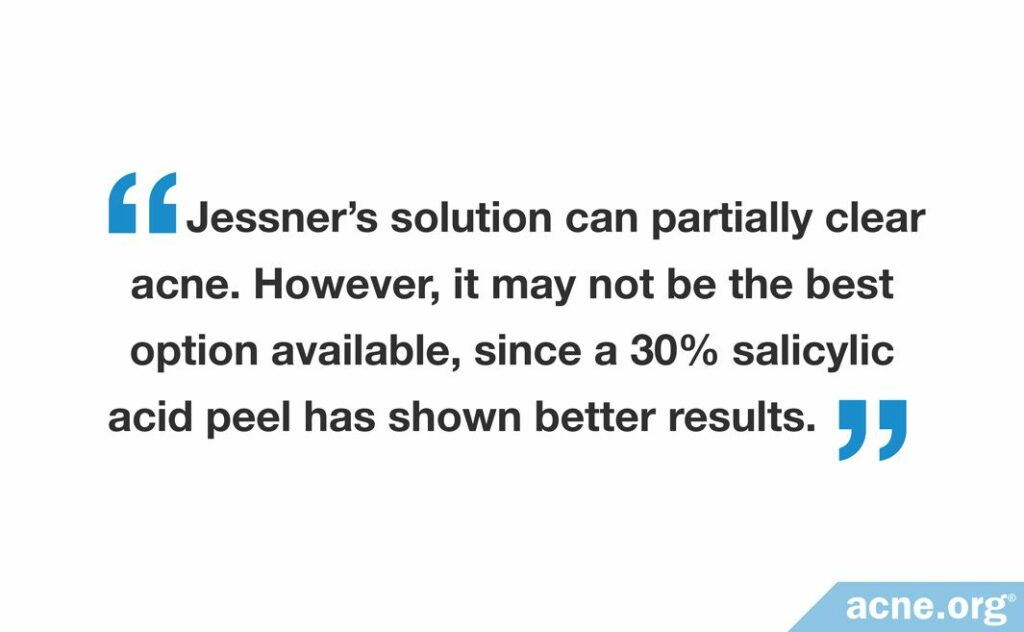
Researchers have performed four studies investigating the effect of Jessner’s solution on acne.2,5-7
Expand to read details of studies on Jessner’s solution
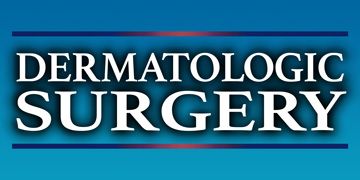
A 2013 study published in Dermatologic Surgery compared the effectiveness of Jessner’s solution to that of a 30% salicylic acid peel in the treatment of acne. Researchers performed this study by implementing a split-face treatment on 13 acne patients. A split-face treatment was performed by applying Jessner’s solution to one half of the face and the 30% salicylic acid peel to the other half of the face, and then comparing the efficacy of treatment. As part of this study, the researchers subjected the acne patients to three split-face peeling sessions, each performed two weeks apart. The results showed that Jessner’s solution and salicylic acid were both equally effective at reducing inflammatory acne lesions like papules and pustules, but only salicylic acid was able to reduce non-inflammatory acne lesions like whiteheads and blackheads. Overall, 76.9% of the participants said Jessner’s solution caused moderate or good improvement of their acne, while 84.6% of the participants said the same about salicylic acid. Therefore, the researchers concluded that the 30% salicylic acid peel was a slightly better treatment for acne than Jessner’s solution.5
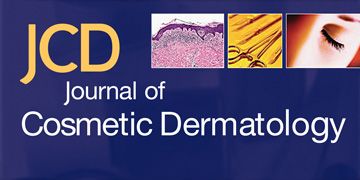
A 2017 study published in the Journal of Cosmetic Dermatology compared the effectiveness of Jessner’s solution to that of a 30% salicylic acid peel in the treatment of acne. Researchers performed this study by applying either Jessner’s solution or the 30% salicylic acid peel to 40 patients using six peels, each performed two weeks apart. The results showed that the 30% salicylic acid peel improved acne more than the Jessner’s solution, and was especially better at clearing non-inflammatory acne lesions like whiteheads and blackheads. Jessner’s solution decreased the average number of acne lesions from 368 to 271, while the 30% salicylic acid peel reduced the mean number of acne lesions from 308 to 143. Therefore, the researchers concluded that while Jessner’s solution could clear acne, it was inferior to salicylic acid.2

A 2018 study also published in the Journal of Cosmetic Dermatology compared the efficacy of Jessner’s solution with a different chemical peel containing 50% glycolic acid and 0.5% salicylic acid solution. The researchers performed a split-face study on 20 patients by treating one side of the face with Jessner’s peel and the other side with the glycolic acid-salicylic acid peel. Each treatment was performed twice at intervals of two weeks. Both peels significantly reduced the number of acne lesions. The researchers found no difference in efficacy between Jessner’s solution and the glycolic acid-salicylic acid peel. However, they noted that the side of the face treated with Jessner’s solution showed more skin irritation compared to the side treated with the glycolic acid-salicylic acid peel.6
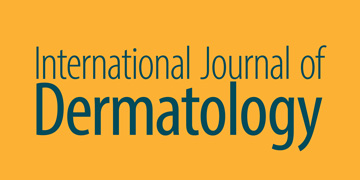
Finally, a 2020 study published in the International Journal of Dermatology compared the efficacy of Jessner’s solution to a 30% salicylic acid peel. The researchers performed a split-face study on 36 patients by treating one side of the face with Jessner’s solution and the other side with the salicylic acid peel. The patients received treatments every other week for a total of 3 sessions. At the end of the treatment, the researchers found a significant reduction in the total number of inflammatory and non-inflammatory acne lesions on both sides of the patients’ faces. They reported that 76.4% of patients experienced a “good or very good outcome” with Jessner’s solution, compared to 85.3% with salicylic acid. Although this seems to suggest that Jessner’s solution was less effective than salicylic acid, the scientists noted that there were too few patients in the study to draw such a conclusion.7
From this data, we can conclude that Jessner’s solution can partially clear acne. However, it may not be the best option available, since a 30% salicylic acid peel has shown better results in two studies.
References
- Kontochristopoulos, G. & Platsidaki, E. Chemical peels in active acne and acne scars. Clin Dermatol 16, 1 – 10 (2016). https://www.ncbi.nlm.nih.gov/pmc/articles/PMC6053170/
- Dayal, S., Amrani, A., Sahu, P. & Jain, V. K. Jessner’s solution vs. 30% salicylic acid peels: a comparative study of the efficacy and safety in mild-to-moderate acne vulgaris. J Cosmet Dermatol 16, 43 – 51 (2017). https://www.ncbi.nlm.nih.gov/pubmed/27557589
- Khunger, N. Recommendations Standard guidelines of care for chemical peels. Indian J Dermatol Venereol Leprol 74, 5 – 12 (2008). https://www.ncbi.nlm.nih.gov/pubmed/18688104
- Zakopoulou, N. & Kontochristopoulos, G. Superficial chemical peels. J Cosmet Dermatol 5, 246 – 253 (2006). https://www.ncbi.nlm.nih.gov/pubmed/17177748
- Bae, B. G. et al. Salicylic acid peels versus Jessner’s solution for acne vulgaris: a comparative study. Dermatol Surg 39, 248 – 253 (2013). https://www.ncbi.nlm.nih.gov/pubmed/23121256
- In Jae, J., Dong Ju, H., Dong Hyun, K., Yoon, M. S. & Lee, H. J. Comparative study of buffered 50% glycolic acid (pH 3.0) + 0.5% salicylic acid solution vs Jessner’s solution in patients with acne vulgaris. J Cosmet Dermatol 17, 797-801 (2018). https://pubmed.ncbi.nlm.nih.gov/29164826/
- How, K. N., Lim, P. Y., Wan Ahmad Kammal, W. S. L. & Shamsudin, N. Efficacy and safety of Jessner’s solution peel in comparison with salicylic acid 30% peel in the management of patients with acne vulgaris and postacne hyperpigmentation with skin of color: a randomized, double-blinded, split-face, controlled trial. Int J Dermatol 59, 804-812 (2020). https://pubmed.ncbi.nlm.nih.gov/32447767/
The post How Does Jessner’s Solution Help Clear Acne? appeared first on Acne.org.
